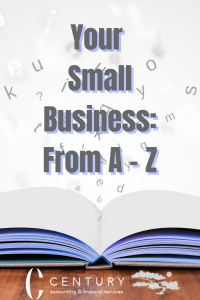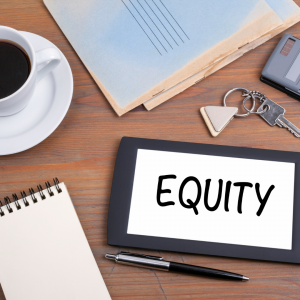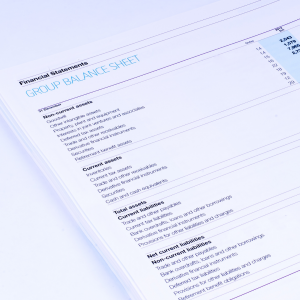
Do you ever wish you had a better understanding of terms your accountant uses when talking about your business?
You are not alone. I’ve had several clients ask me to explain a term we were using, but they also admitted they were embarrassed to ask.
They thought they should already know what it meant.
That’s just not true!
Just as I may not understand terms directly related to your business, I don’t expect you to understand mine. We become familiar with the words we use every day and sometimes forget that people outside of our industry aren’t.
So, I decided to start this series:
Your Business: A-Z
We will work our way through the ABC’s of your business, hopefully adding a further understanding of commonly used accounting and taxation terms.
Next up, D-F!

D is for Depreciation
In accounting, depreciation is how the cost of a fixed asset is allocated over time – the time in which the purchase will be useable to the business.
When you purchase a major asset, you cannot take the expense deduction right away. Since an asset is expensive and lasts for multiple years, it’s expense must be spread out over the asset’s useful life.
The IRS has strict rules for writing off the costs of assets that dictate how and when a company can deduct the expense.
Depreciation expenses don’t involve cash, so they do not directly affect cash flow. They are solely recorded for accounting and tax purposes and can reduce your tax liability each year.
Depreciation can seem complicated, as there are several different methods of calculation. This is an area that it pays to have an accountant to provide their expertise and advice.

E is for Equity
Three types of business entities exist corporations, sole proprietorships, and flow-through entities such as partnerships. Stockholders’ equity applies only to the corporate business entity. The comparable partnership account is called partners’ equity. For sole proprietorships, the account is called owners’ equity.
For this explanation, we will use owner’s and shareholder’s interchangeably. Equity is one of the three main sections of a company’s balance sheet and one part of the accounting equation: Assets = Liabilities + Equity.
It represents the owner’s investment in the business less any draws or distributions, plus the net income (or minus net loss) since the company began.
Many people think equity is a business asset, but it’s not.
Owner’s equity is more like a liability to the business. It belongs to the owner or shareholder himself, not the company. It represents the amount of money that would be returned to a company’s shareholders if all of the assets were liquidated and all of the company’s debt was paid off.
Shareholders’ equity has three standard components: paid-in capital, treasury stock, and retained earnings.
Paid-in capital represents money that shareholders invest in a business.
Retained earnings show a company’s total net income or loss from the first day in business to the date on the balance sheet.
Sometimes, shareholder’s equity can be negative. Suppose the company’s liabilities are greater than its assets. In that case, the shareholder or owner may need to put more money into the business to keep things afloat.
Ultimately, shareholders’ equity can be used to evaluate the overall value of a company. However, several balance sheet calculation components are needed to gain more in-depth insight into a company’s finances.

F is for Financial Statements
To help small business owners to be successful, I want to explain the parts of the financial statement that can make you be a better manager of your business.
On the Balance Sheet, the Total Assets must ALWAYS equal the Total Liabilities plus the Equity.
Review your Accounts Receivable. If customers are not paying you and this number continues to increase, that’s a problem.
Look at your cash in the bank. For our clients, we prepare a bank reconciliation every month for every bank account. These amounts will not necessarily be (and probably won’t be) the same amount showing on their bank statement due to outstanding checks and deposits in transit.
Most of our clients’ eyes go to the bottom-line profit or loss figure on the Profit and Loss page.
However, if you allow your eyes to travel back up the page, there is a wealth of information.
Look at your expense categories and compare the monthly percentages to the year to date. If there is a big difference, for example, in July insurance was 8.1% of sales and year to date was only 2.5% of sales, that would be a red flag for you to look into further. You can also look at the prior year to see if it was consistent.
Your general ledger is the detail and back up for all deposits and expenses that occur each month. If a percentage looks out of character, go to your general ledger, look under that particular account code. Maybe you had an annual bill that was due, or an invoice may have been paid twice by mistake.
There are usually several graphs included with the financial statements.
They give you a quick picture of the trends in your business.
Don’t let your financial statements intimidate you anymore!
I encourage you to reach out to us about anything that you would like a further explanation of.
If you missed the first installment, you can find it here:
